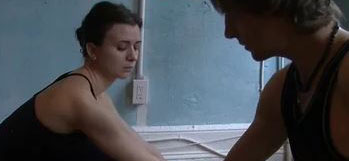
These are the notes that accompanied the Asana Kitchen video on Pasasana.
1) Establish a Grounded, Immoveable Foundation
Balancing in a full squatting position is one of the most important and challenging aspects to this posture. The feet are your foundation, they are directly in contact with the earth. Organize your posture directly over this foundation noticing when/if you are either too far behind or in front of your foundation. Start by planting the feet while feeling the support of the arches. Squat all the way down. Close the knee joints entirely. Lower the hips, touch buttocks to the backs of the lower legs. Orient your squat directly over your feet. If you have any difficulty squatting you will feel unstable when you squat as though the hips are too heavy, that they drag you down and back. You may want to lift up the heels. But instead elevate your heels with just enough height to truly balance on the feet as you feel your hips, torso and head align more clearly over this foundation. When you feel stable, centered and immoveable in your squat, then you are ready for the next step.
2) Remember the Twist
As you develop and refine how you work in the posture remember to return your orientation to the twist along the central axis. Study the rotation of the torso in order to study the middle channel. Remember that part of creating a satisfying twist is in becoming receptive, especially within the torso and spinal area. And so position yourself to receive the action of turning the spine, and endeavor to rotate your spine more evenly from base to crown. Notice the inner refinement that can take place along shushumna, the middle pranic axis.
3) Position of the feet/knees
To make the posture easier place one foot or knee slightly forward of the other. If you are twisting to the left you can facilitate the twist to the left by moving the right foot and/or knee forward of the left. This also brings the right hip forward of the left hip and thus makes twisting to the left easier. For some of you this will serve to clarify the central axis, and give you more freedom in a certain direction to twist, and will help establish a more stable, grounded foundation. Your posture and twist will not be served If you are too strict and insist on keeping the feet/knees together or the heels down. But for others keeping the feet and knees more together will help you to hone in on the vertical axis and improve the feeling of the rotation. In each case you want to continue to refine your sense of the breath, cultivate an awareness of the actions and the resulting counter actions along the glorious axis set in motion by the breath, and observe how that awareness leads to intelligence in your asana's.
4) The Energetic Chain of The Noose
At one point in the video, using Rob as the model, I trace what I call an 'energetic chain' formed by the upper back, shoulders, arms and connected hands (the parts of the body that form the 'noose' that give the posture its name) Rob was twisting to the right and I used my hands to trace the energetic chain in a counter clockwise direction. But what I didn't mention was that the direction of the chain that I indicated in the video was actually the more subtle counter loop. If you are twisting to the right, first try experiencing a clockwise direction to the energetic chain formed by the loop of the upper torso, arms, and hands. And afterwards experiment with a counter clockwise direction to the loop.
Comments
No comments.